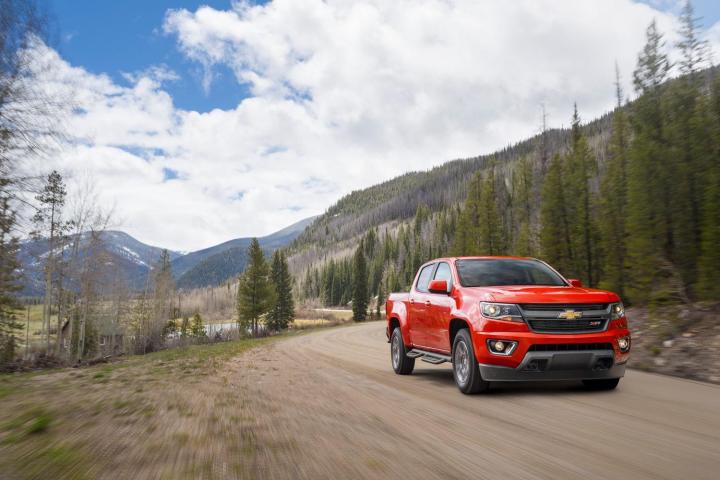
Most of the updates are found in the engine bay. Popping the Colorado’s hood reveals the presence of a new 3.6-liter V6 engine borrowed from the Cadillac parts bin and tweaked for work use. The six-cylinder uses direct fuel-injection to generate 308 horsepower at 6,800 rpm and 275 pound-feet of torque at 4,000 rpm, increases of just six horses and five pound-feet of twist over the outgoing 3.6-liter six.
The new V6 features variable valve timing and cylinder deactivation, a technology that shuts off two cylinders under partial load in order to save fuel. Also new for the latest model year is an eight-speed automatic transmission with a higher first-gear ratio that helps motorists get moving faster when they’ve got a heavy trailer in tow, and a lower rear axle ratio that improves fuel mileage by reducing how fast the engine spins at freeway speeds. However, fuel economy figures for Chevrolet’s smallest truck haven’t been announced yet.
The Bowtie hasn’t made any mechanical modifications to the Colorado’s other engines. That means base models continue to come with a 2.5-liter, four-cylinder engine rated at 193 horsepower and 184 pound-feet of torque. Buyers who tow or haul heavy loads on a regular basis can step up to the 2.8-liter, four-cylinder turbodiesel, which makes 181 horsepower at 3,400 rpm and a solid 369 pound-feet of torque at just 2,000 rpm.
Read more: Chevrolet’s next Corvette might be a completely different beast
The 2017 Chevrolet Colorado is scheduled to land in showrooms across the nation in the fall. Pricing information hasn’t been released as of writing, but it’s reasonable to assume that the updated drivetrain will be accompanied by a small price increase. The GMC Canyon — the Colorado’s twin — will benefit from the exact same mechanical upgrades.



